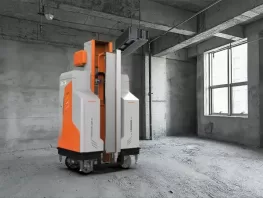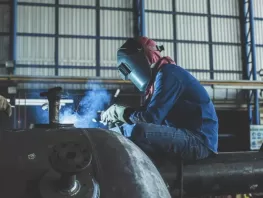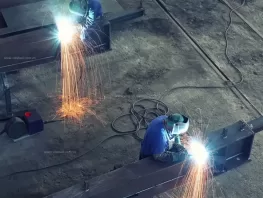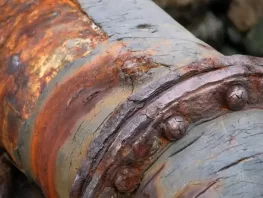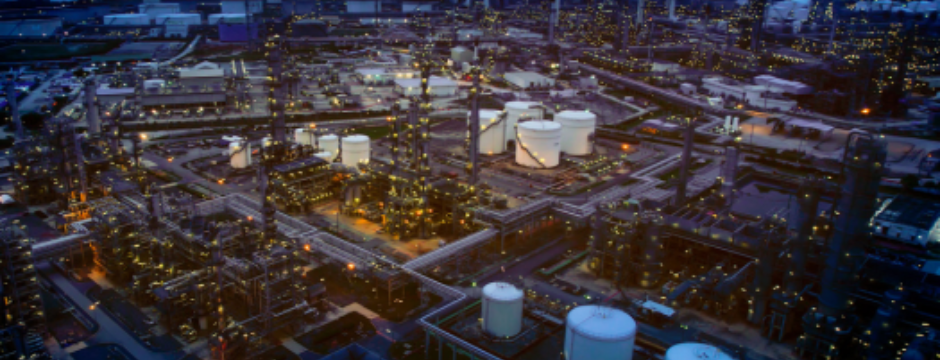
In-Depth Guide to High-Temperature Coatings: Performance Characteristics and Applications
Posted Aug 26, 2024 by Dave Scaturro

In industries where temperatures can soar to unimaginable heights, protecting equipment and structures from the relentless assault of heat is a feat of art and science. Enter high-temperature coatings—the unsung heroes that guard against the blazing infernos of industrial environments. These advanced coatings are more than just a protective layer; they are the key to preserving integrity and performance where the heat is most intense. From petrochemical plants to aerospace facilities, high-temperature coatings are essential tools that ensure everything from safety to efficiency, turning potential vulnerabilities into strengths.
Performance Characteristics of High-Temperature Coatings
High-temperature coatings are engineered to offer several critical performance characteristics that enable them to withstand and protect against extreme heat:
Heat Resistance
The primary feature of high-temperature coatings is their ability to withstand extreme heat without breaking down. These coatings can endure temperatures ranging from 200°C (392°F) to over 1000°C (1832°F), depending on the specific formulation.
For example, silicon-based coatings are often used for applications up to 650°C (1202°F), while ceramic-based coatings can handle temperatures exceeding 1000°C (1832°F). This resistance ensures the structural integrity of the coated surface is maintained, even under intense heat.
Corrosion Resistance
In high-temperature environments, corrosion can accelerate due to increased chemical reactions. High-temperature coatings are designed to provide an effective barrier against corrosive elements, preventing oxidation and extending the life of the equipment.
These coatings create a protective shield that reduces the risk of metal degradation, particularly in environments with corrosive gases or chemicals. This characteristic applies to the oil and gas industry, where equipment is often exposed to harsh conditions.
Thermal Stability
Thermal stability refers to a coating's ability to maintain its physical and chemical properties at elevated temperatures. High-temperature coatings are formulated to remain stable and adhere well to surfaces, even when exposed to fluctuating temperatures.
This stability ensures that the coatings do not crack, peel, or delaminate under thermal stress, providing consistent protection over time. It also contributes to the coating's ability to act as a thermal barrier, reducing heat transfer and protecting underlying materials.
Abrasion Resistance
In industrial settings, surfaces are often subjected to physical wear and tear. High-temperature coatings are designed to be abrasion-resistant, maintaining their protective qualities even in harsh environments where physical damage may occur.
This resistance helps prevent scratches, wear, and other damage that could compromise the coating's effectiveness. By providing a durable layer of protection, high-temperature coatings ensure the longevity of the equipment and reduce maintenance costs.
Adhesion and Flexibility
For a coating to be effective, it must adhere well to the substrate and possess flexibility to accommodate thermal expansion and contraction. High-temperature coatings are formulated to provide excellent adhesion to various surfaces, ensuring they remain intact and functional.
Flexibility is another key characteristic, allowing the coating to expand and contract with the substrate without cracking or losing adhesion. This adaptability is crucial in environments where temperature fluctuations are common.
Chemical Resistance
In addition to temperature and abrasion resistance, high-temperature coatings often possess chemical resistance to withstand exposure to harsh chemicals and solvents that may be present in industrial environments.
This resistance protects the underlying material from chemical attack, ensuring that the coating protects against heat and chemical exposure.
Applications of High-Temperature Coatings
High-temperature coatings find applications across industries where heat resistance is critical. Some key applications include:
Petrochemical Industry
In the petrochemical industry, equipment such as pipelines, storage tanks, and refineries operate under extreme heat and pressure. High-temperature coatings protect these structures from corrosion, oxidation, and thermal degradation.
By providing a robust protective barrier, these coatings help extend the lifespan of critical equipment and reduce downtime due to maintenance and repairs. This protection is essential in maintaining the efficiency and safety of petrochemical operations.
Aerospace Industry
Aircraft engines, exhaust systems, and other components are exposed to high temperatures during operation. High-temperature coatings are applied to these parts to enhance their thermal performance and resistance to oxidation.
These coatings contribute to aerospace component safety, allowing them to withstand the extreme conditions experienced during flight. Additionally, they help reduce the weight of components by providing lightweight yet effective protection.
Automotive Industry
In the automotive sector, high-temperature coatings are used on exhaust systems, turbochargers, and engine components to protect against heat and improve performance.
By minimizing heat transfer and reducing the risk of thermal damage, these coatings help improve the efficiency and reliability of automotive systems. They also reduce emissions by ensuring that components operate at optimal temperatures.
Power Generation
Power plants rely on high-temperature coatings to protect boilers, turbines, and other equipment from heat-related wear and tear.
These coatings ensure that power generation equipment remains operational and efficient, reducing the risk of outages and extending the life of critical components. In renewable energy applications such as solar power, high-temperature coatings help improve their performance and durability.
Manufacturing Industry
In manufacturing, high-temperature coatings are used on equipment like furnaces, kilns, and heat exchangers to prevent oxidation and corrosion.
By providing reliable protection against high temperatures and corrosive environments, these coatings help maintain the efficiency and longevity of manufacturing equipment. They are also used in applications such as metalworking and glass production, where extreme heat is a constant factor.
Selecting the Right High-Temperature Coating
Choosing the appropriate high-temperature coating requires careful consideration of several factors:
Temperature Range: Identify the maximum temperature the coating can withstand and choose a product formulated for that range. Different coatings are designed for different temperature thresholds, so it's crucial to select one that meets the specific requirements of your application.
Substrate Material: Consider the material of the surface to be coated, as different coatings adhere better to different substrates. Ensure that the chosen coating is compatible with the substrate to achieve optimal adhesion and performance.
Environmental Conditions: Evaluate the environmental conditions, such as exposure to chemicals, moisture, and UV radiation, to select a coating that offers comprehensive protection. Some coatings may provide additional resistance to environmental factors, enhancing their overall effectiveness.
Application Method: Consider the application process, including surface preparation, application technique, and curing requirements. Some coatings may require specialized application methods or equipment, so it's important to understand the specific requirements before proceeding.
Durability and Longevity: Assess the expected lifespan of the coating and choose one that offers long-term protection with minimal maintenance. While some coatings may be more cost-effective initially, investing in a high-quality coating can provide significant long-term savings by reducing the need for frequent reapplication.
Cost: Evaluate the cost-effectiveness of the coating to its performance characteristics and benefits. While it's important to budget, prioritizing quality and performance can lead to better outcomes and lower overall costs in the long run.
Application Techniques
Proper application is crucial to the effectiveness of high-temperature coatings. Here are some key steps in the application process:
Surface Preparation: Thoroughly clean and prepare the surface to remove contaminants, rust, and old coatings. Proper surface preparation ensures the new coating adheres well and provides maximum protection.
Application Method: Choose an appropriate method, such as spraying, brushing, or dipping, based on the coating type and surface. Each method has advantages and limitations, so selecting the right one is essential for achieving the desired results.
Curing Process: Follow the recommended curing procedures to ensure the coating achieves its full performance characteristics. Proper curing is essential for the coating to develop its protective properties and adhere securely to the substrate.
Quality Control: Conduct regular inspections and quality checks during the application process to ensure adherence to specifications. This step helps identify any issues early on, allowing for prompt corrective action.
Alpine Painting and Sandblasting is Here to Help
High-temperature coatings are vital for protecting equipment and structures in extreme heat environments. By understanding their performance characteristics and applications, industries can make informed decisions to enhance safety, durability, and efficiency.
Alpine Painting and Sandblasting offers expert solutions for high-temperature coating needs, ensuring your assets remain protected and operational under the most demanding conditions. Our team is dedicated to providing the highest quality coatings and application services, tailored to meet the unique requirements of each project. Contact us today to learn how we can help protect your valuable assets with advanced high-temperature coatings.
